The chilling words on a fallen gravestone disturbed passersby for generations as they peered through the grass of a Connecticut cemetery.
“Asa H. Havens, mate of Barque Glen was murdered by mutineers on September 17, 1850, aged 37 years,” the epitaph stated bluntly.
The young sailor had been shot by crew members as he fought their attempts to seize a shipment of copper in the deserted waters off the coast of Chile.
Two men were ultimately hanged for the murder, but had Haven’s grateful captain really returned the young sailor’s body thousands of miles to his family for burial in the East Haddam cemetery?
Now a group of local veterans has finally solved the mystery that has puzzled the city for nearly two centuries.
“I never really questioned it,” admitted local historian Dr. Karl Stofko. “But a lot of other people do.”
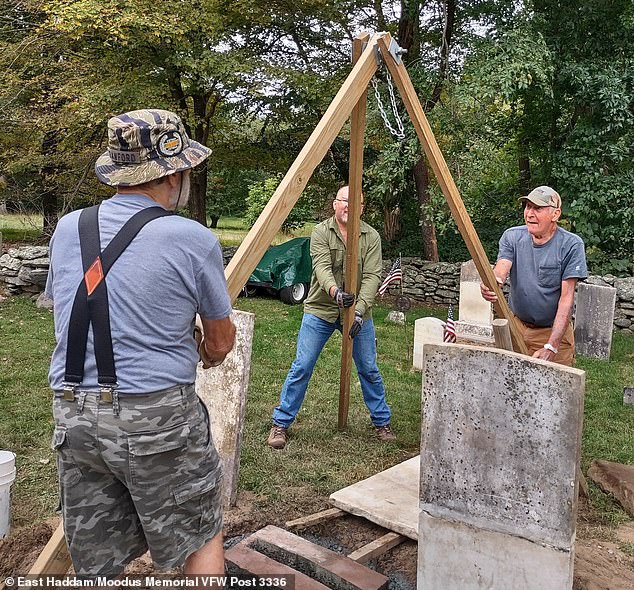
VFW volunteers, called the “Cemetery Troopers,” were intrigued by the grave as they inspected and restored veterans’ graves in East Haddam, Connecticut.
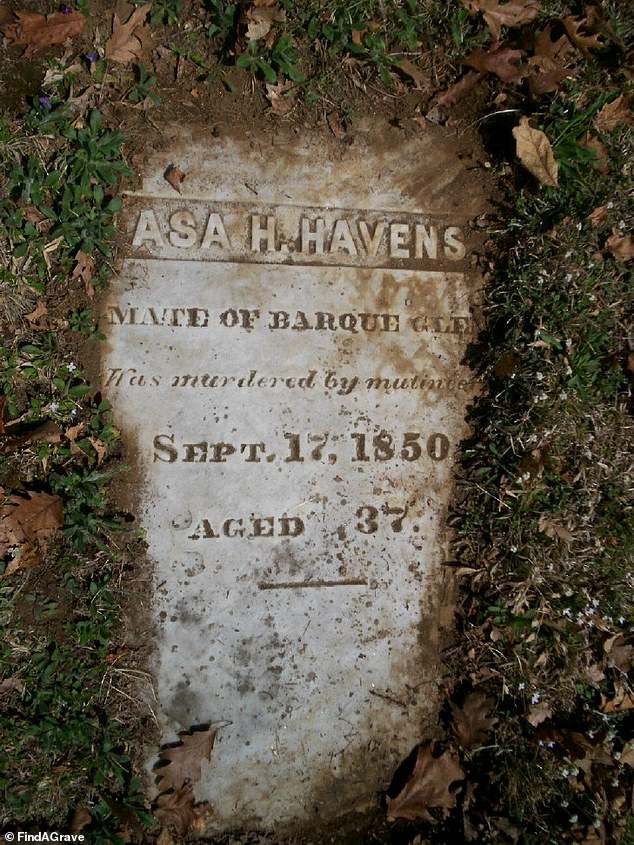
The chilling epitaph had lost none of its power when it toppled in the North Plain Cemetery
The Glen was a 287-ton sailing vessel that plied the busy American shipping lanes when steamships were in their infancy.
It was built just 300 miles up the coast from Freeport, Maine, but it was in California that the young New Englander first stepped aboard.
It had arrived in San Francisco with 200 tons of lumber in July 1849 when the state was in the grip of the California Gold Rush and Captain Charles B. Small decided to leave it behind in Sacramento while he joined the thousands of prospectors trying their luck in the hills. and gullies of the Sierra Nevada.
Weeks later, he returned to his boat empty-handed before welcoming Havens aboard as part of his new crew for the 14,000-mile journey back to New England.
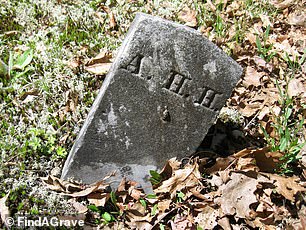
The mysterious grave even had a footstone
With no gold to fill his hold, the captain stopped in Valparaiso, Chile, to pick up a cargo of copper ore worth $12 million at today’s prices, along with 2,000 bales of cinchona bark used to make the anti- antimalarial drug quinine.
He also picked up four new crew members who were determined to steal the cargo before the ship had even left port.
Havens had remained on board after being promoted to second mate and was fortunate to escape poisoning when the ship’s cook targeted the officers’ food.
Captain Small and First Mate George Waite became seriously ill after partaking of a meal of turtle soup a few days after leaving Chile.
The pair managed to recover, but two weeks later the captain was awakened in his cabin by the sound of musket fire and a cry of ‘murder’ from Havens on the upper deck.
Storming out, he found the ship’s armory seized by his mutinous crew, and Havens clinging to a mooring post, mortally wounded.
The cook and another sailor ordered him back to his cabin at gunpoint and threatened to “blow his brains out” as they took control of the ship.
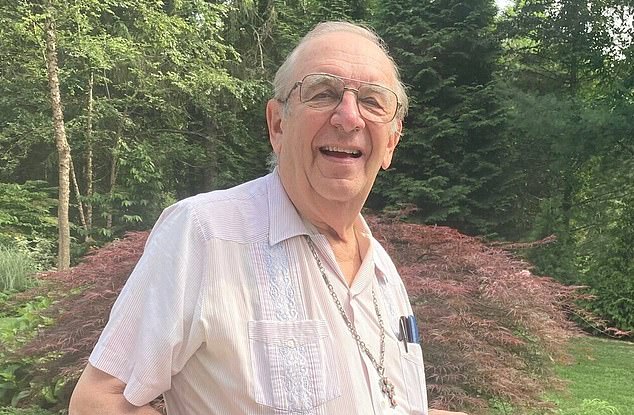
Local dentist and amateur historian Dr. Karl Stofko doubted whether there were remains in the grave
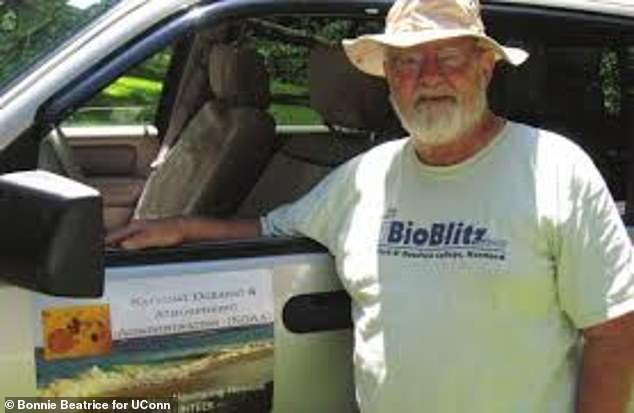
Ken Beatrice called in the favors of long-time colleagues at the Bureau of Archeology to conduct soil analysis on samples from the site and deploy ground-penetrating radar
But the conspirators had overlooked the captain’s stash of swords and Small grabbed a sword before escaping from his cabin window and attacking the leader.
First Mate George Waite joined him and the pair managed to overpower the mutineers and recapture the ship.
Havens was dead, Waite was seriously injured, and most of the crew was in leg irons, forcing the captain to sail the ship almost single-handedly back to Valparaiso, where he handed the conspirators over to the American consul.
The US Navy transported the arrested men in a sloop-of-war to New York, where their trial became a media sensation.
Edward F Douglass and Thomas Benson were convicted of Havens’ murder after a mutineer turned state’s evidence and both were executed in July 1851.
But what had become of their murdered shipmate?
“A newspaper, I think it was the New York Herald in 1850, had an article saying that Asa had been wrapped in a blanket and buried in the sea off the coast of Chile,” Dr. Stofko said.
But had the captain really thrown his loyal lieutenant overboard and continued on his way?
The ship’s insurers awarded $500 to Havens’ mother and an impressive marble slab was erected next to the other graves in East Haddam Cemetery.
“His gravestone had a footstone,” archaeologist Ken Beatrice told the newspaper Hartford Courant.
‘And on the pedestal were his initials. And that indicated: ‘Yes, there was a funeral there’. “That got us going.”
Three years ago, the city’s VFW post put out a call for volunteers to survey East Haddam’s cemeteries for veterans’ graves that had fallen into disrepair.
Calling themselves the “Cemetery Troopers,” the volunteers began the painstaking work of documenting thousands of graves in the city’s 23 cemeteries.
They discovered more than 230 unmarked veterans’ graves dating back to the Revolutionary War, but were intrigued by the grim epitaph on the sailor’s gravestone.
“Asa was the talk,” Beatrice said.
‘We always talked about him. And then we finally did some research on him and that piqued my interest.”
Dr. Stofko remained a skeptic.
The amateur historian and professional dentist thought the matter had been solved when he tried to examine the grave with a long steel rod and found the ground to be unyielding.
“That means the ground was never excavated,” he said.
‘You can examine most graves quite easily with a sounding rod, because the earth has been dug up.’
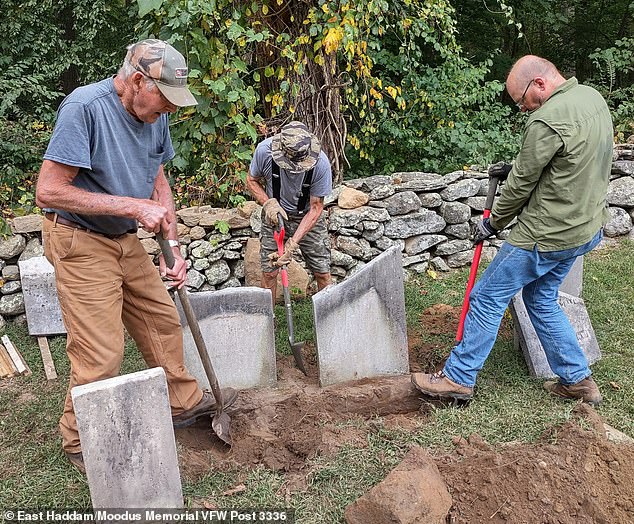
The Troopers documented thousands of graves in the city’s 23 cemeteries and discovered veterans dating back to the Revolutionary War
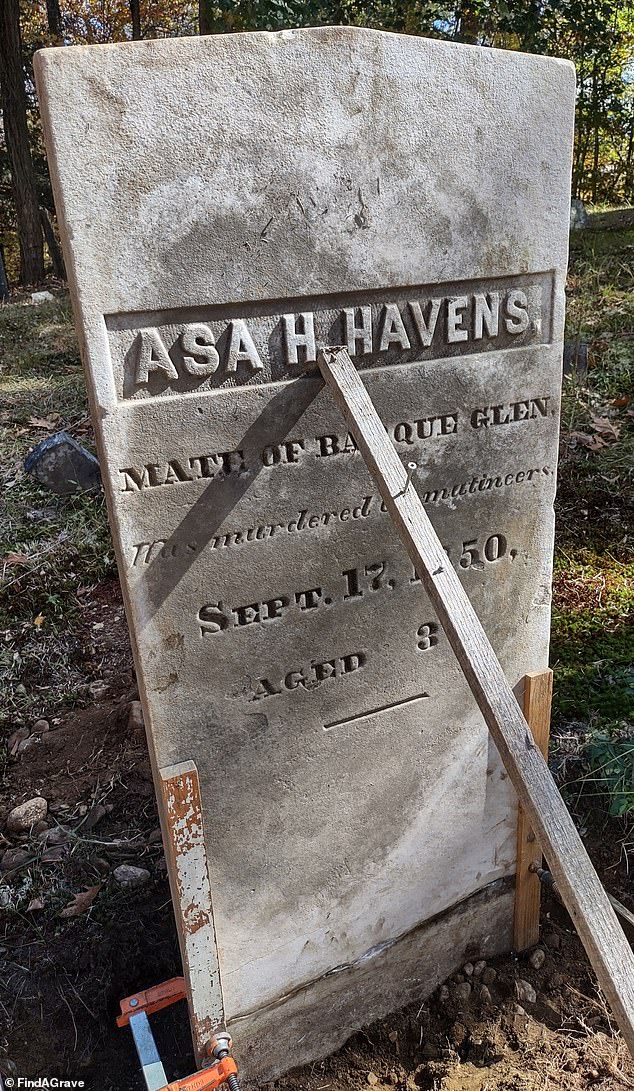
The young sailor’s gravestone has been restored as the mystery is finally solved
But the Troopers were dissatisfied. It was not uncommon for bodies to be kept in a cask of liquor after dying on long sea voyages, and Havens was a hero who saved his captain along with his valuable cargo.
“They couldn’t understand why anyone would put a gravestone if there was no one in the ground,” Stofko said.
The Troopers began restoring Havens’ headstone and Beatrice called in the favors of old colleagues at the Bureau of Archeology to conduct soil analysis on samples from the site and deploy ground-penetrating radar on the mysterious grave.
The radar suggested the ground had been disturbed at some time in the distant past, but Beatrice said the soil analysis put the matter beyond doubt.
The earth beneath the surface showed a clear demarcation between the dark topsoil and the lighter sand-colored subsoil, indicating that the two had never been mixed together as they would have been if a grave had been dug.
“The Asa Havens mystery has been solved,” Beatrice concluded.
“He was not brought home to his family and buried in the North Plain Cemetery. Asa was given to the depths of the sea.”
“We were really hoping we would find something,” he added. ‘We really wanted to find something.
“But it was fun.”
